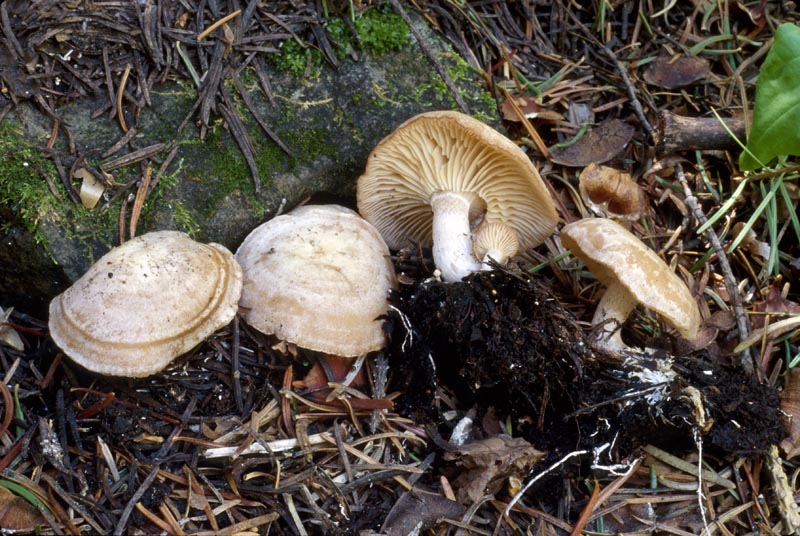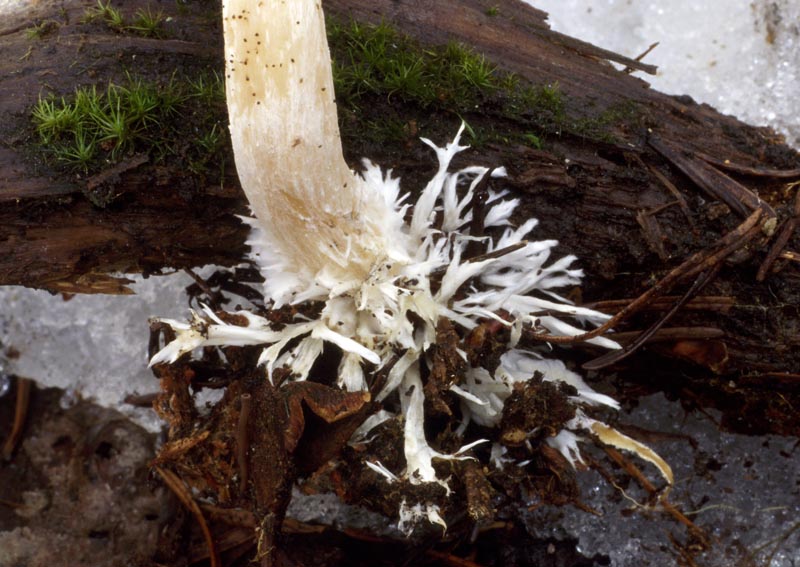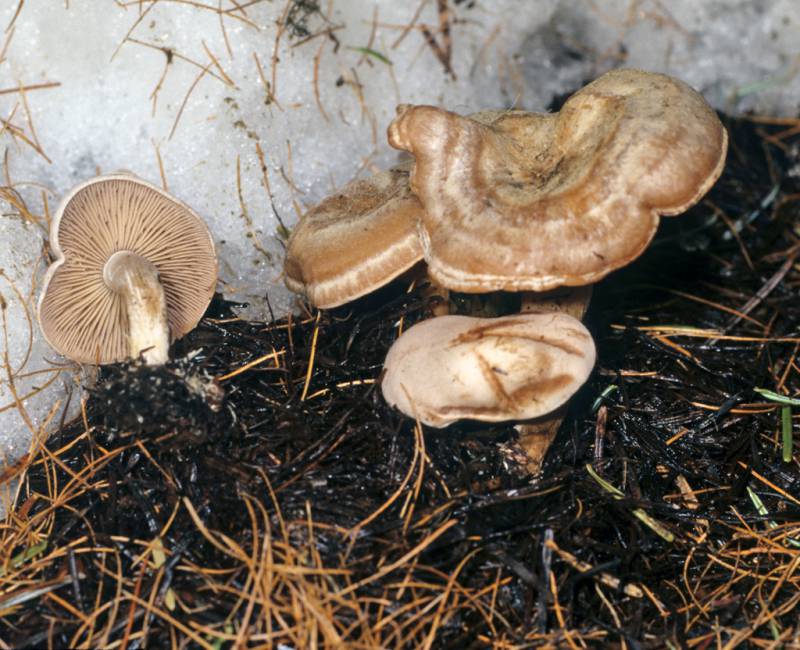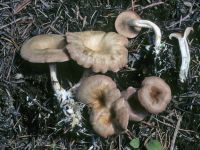Distribution: Western snowbank mushrooms
Habitat: Melting snowbanks
Spores: late May to early July
Conservation Status: Not of concern
Edibility: not edible
not edible
Clitocybe albirhiza is one of the western snowbank mushrooms and typically occurs in the spring and early summer following snow-melt, often at the same time as C. glacialis. It occurs in clusters or is scattered in conifer litter in montane forests and at times is rather abundant. Its species epithet comes from the abundant white mycelial strands that extend from the stipe base. The mushrooms are generally small to medium-sized but can become rather robust. The caps often have a whitish bloom at first, and the underlying color varies from pale buff to pinkish buff, or more brownish; moist caps are typically darker colored and often have concentric color-zones, while drier caps are usually paler and opaque. Mature caps are broadly depressed to funnel-shaped with an elevated margin. The gills are short decurrent to adnate, close, and pale buff to pinkish buff. The stipes are fibrous and tough, and colored like the cap surface. The taste is bitter. C. ramigena H. E. Bigelow is a similar species that occurs in spring and summer on wood and debris. It is somewhat smaller and apparently does not have a bitter taste.
Sources: Trudell, Steve and Joe Ammirati. Mushrooms of the Pacific Northwest. Portland, Timber Press, Inc. 2009. Cripps, Cathy L., Vera S. Evenson, and Michael Kuo. Rocky Mountain Mushrooms by Habitat. Chicago, University of Illinois Press, 2016.
PNW Herbaria: Specimen records of Clitocybe albirhiza in the Consortium of Pacific Northwest Herbaria database
CalPhotos: Clitocybe albirhiza photos








